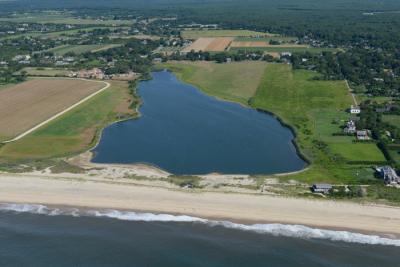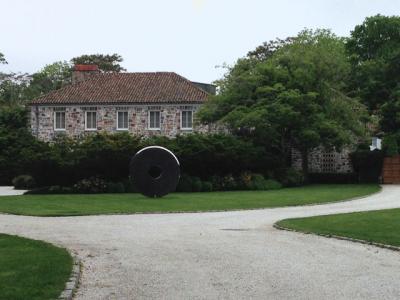South Fork Stands With Orlando
South Fork Stands With Orlando

A gunman opened fire Saturday in a gay nightclub in Orlando, Fla., about 1,200 miles from here, but the grief in the aftermath of the mass shooting has resonated around the country, including on the South Fork.
"It just hit so hard. . . . It could have been us," said Tom House, a Bridgehampton School teacher who organized peaceful demonstrations in support of the victims of the Orlando shooting on Sunday and Tuesday in Bridgehampton.
According to news reports, Omar Mateen, 29, of Fort Pierce, Fla., killed 49 people and wounded 53 more at the Pulse nightclub before police fatally shot him. He used a gun that has been described as an "assault-type rifle," which he obtained legally despite being the subject of two Federal Bureau of Investigation inquires into possible ties to Islamic State militants. His attack, authorities say, was the worst mass shooting in United States history.
On Sunday from 4 to 6 p.m. at the Water Mill Community House, the East Hampton and Southampton Town Democrats will co-sponsor a rally to ban assault weapons. People have been asked to take their own signs to the rain-or-shine demonstration.
Tuesday's event in Bridgehampton, a traveling candlelight vigil, began at the school with a group of about 75 people of all ages, some carrying signs with slogans like "We Stand With Orlando," "No More Guns," and "Somos Orlando" (We are Orlando). Holding lights of all kinds — wax candles, electric candles, flashlights, glowing plastic tubes of flashing rainbow lights — the crowd swelled to nearly 100 by the time it paused in front of the Hampton Library to sing "This Little Light of Mine." Along the way, the group received applause from patrons at Almond Restaurant and Bobby Van's. Participants walked down to the Bridgehampton Community House, paused for photographs, and made their way back to the school, where students reflected on the tragedy.
"I don't think it's fair that innocent people were killed. I hope the violence stops and never happens again," said Estefany Bonilla, a seventh grader who helped Mr. House make a large banner that said, "Bees Stand With Orlando."
Another student, Alanah Johnson, an eighth grader, called the shooting cruel and said she hopes Tuesday's vigil, and others like it around the country, showed that change is needed. "If you want people to do something, you have to take a stand," she said.
For some, Tuesday's vigil was a place to grieve. Carlos Martinez of Sag Harbor, who is gay, said he was devastated by the shooting. When he woke up on Sunday and heard the news, he said the hair on his arms stood up and he got emotional.
"It's our community," he said. "It's not easy for the gay community to live free. People come to the U.S. to feel free and to have a better life. This is so terrible."
Tuesday's vigil was also an opportunity to call for action. "I just think there's no reason for anyone to have a machine gun. They should be outlawed," Bette Lacina of Sag Harbor said. "We need to get Congress back to a Democratic majority. That would help. We've got to have everyone come out to vote. I'm afraid there are so many people who are so irrational. They keep quoting the right to bear arms, but an assault weapon should be illegal."
The Rev. Kimberly Quinn Johnson, the minister at the Unitarian Universalist Congregation of the South Fork, recalled the words of Cornel West, the prominent Democratic socialist activist and author.
"He said, 'Justice is what love looks like in public,' " Ms. Johnson said. "It's not enough for us to just love our families, our friends, our schools, our churches. . . . What love looks like in public is taking all of our hurt and pain from the corners of our lives and coming together to make us stronger."






